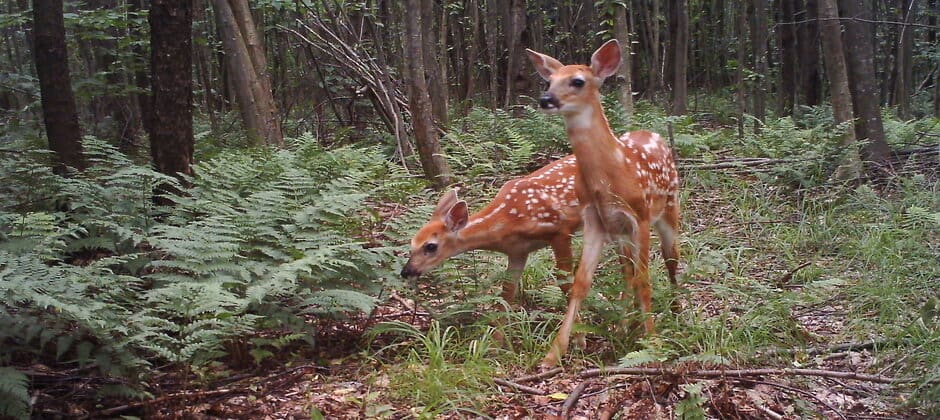Share this article
Wild Cam: Humans push deer into predators’ spaces
Human presence is changing how deer and a suite of predators interact in Pennsylvania state forests and the surrounding areas.
Predators can affect the ways that white-tailed deer use different ecosystems on the landscape. Asia Murphy, a postdoctoral researcher at the University of California, Santa Cruz, wondered how humans may influence these interactions.
To find out, as part of a study she led published recently in the Journal of Animal Ecology, she and her colleagues deployed trail cameras at three state forests in Pennsylvania during the summers of 2016 and 2017. In total, the team gathered about 400 gigabytes of photos from 330 locations.
Enlarge
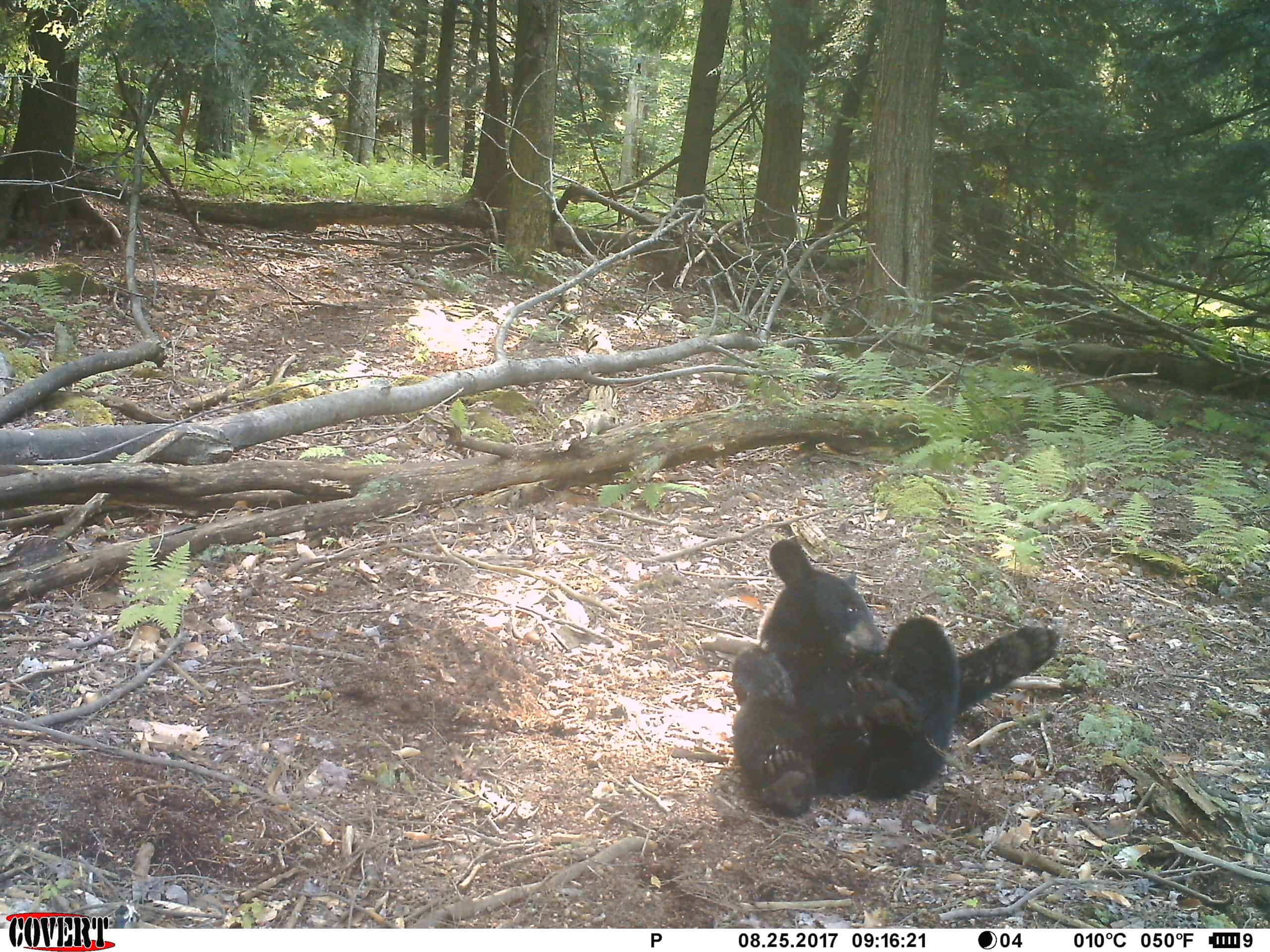
Credit: Asia Murphy
The researchers categorized the photos by species to see how white-tailed deer (Odocoileus virginianus) and predators like bobcats (Lynx rufus), coyotes (Canis latrans) and black bears (Ursus americanus) used spaces both near and far from human activity. They kept track of things like how long it would take a coyote to turn up on the same camera after a deer had passed by, or vice versa.
Overall, Murphy and her team found that many of these species co-occurred on the landscape more often than researchers previously believed. But those interactions changed based on time and location.
Enlarge
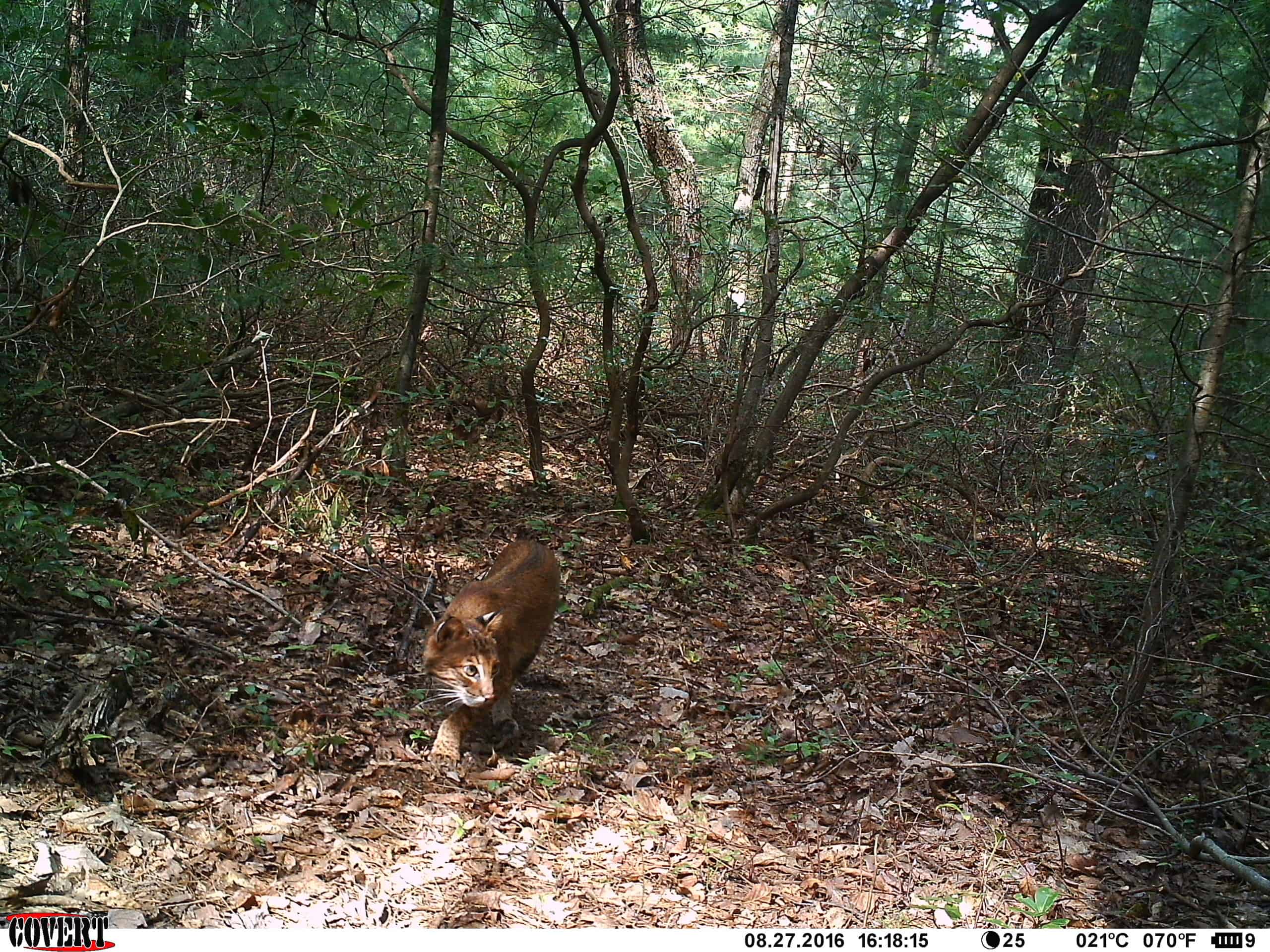
Credit: Asia Murphy
For example, in Pennsylvania’s northern forests that had less surrounding human activity, each species had its own distinct activity patterns. Humans in those areas were more active around noon, while black bears were mostly active around 8 p.m. Coyotes usually began to move more around 10 p.m. while bobcats peaked at about 4 a.m. Fawns were most active at about 7 a.m.
Enlarge
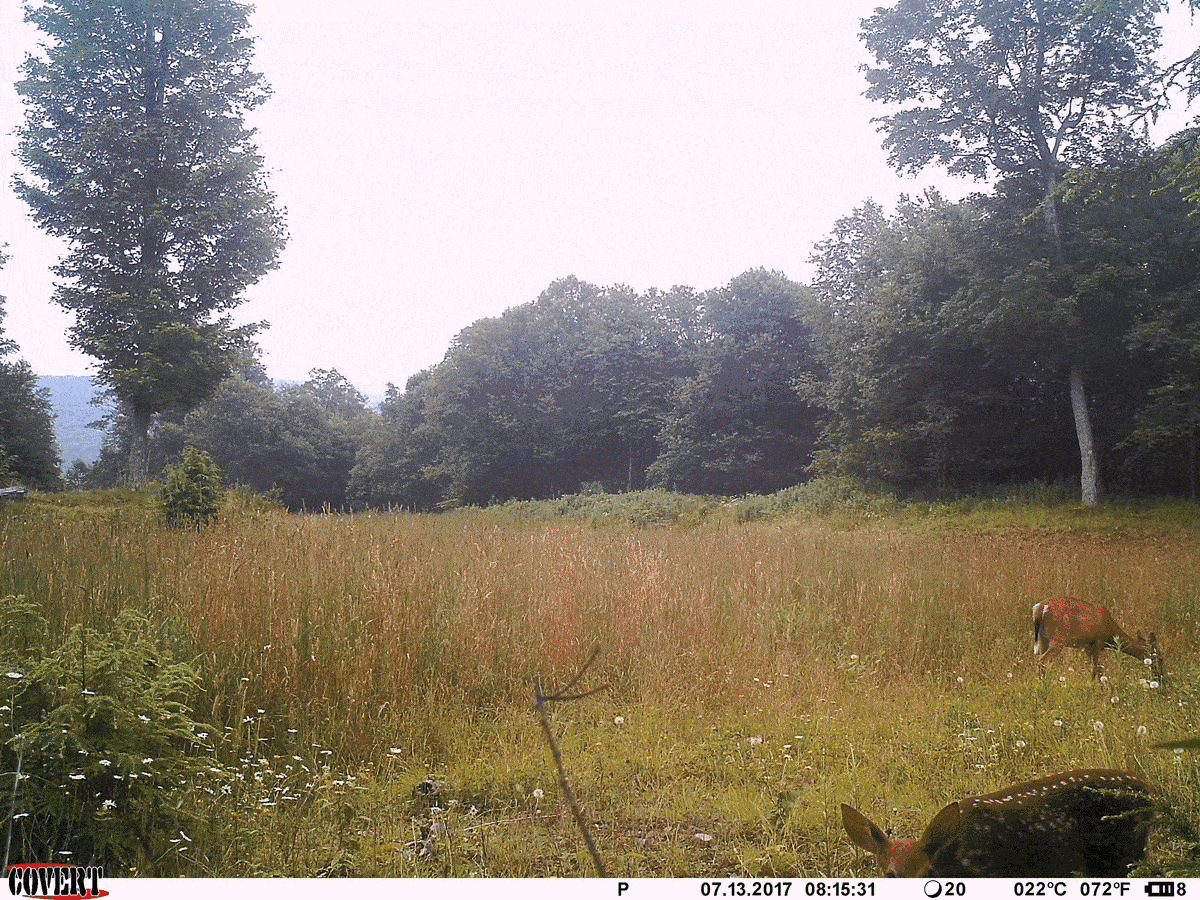
Credit: Asia Murphy
In southern state forests that had more surrounding human activity, coyotes and deer fawns were more likely to pop up on the same cameras—like ones placed near forest edges—but not always at the same time. However, in areas surrounded by more human development, timing also overlapped for the predators and their prey.
“Fawns were more likely to be active at the same time as their predators if the state forest was surrounded by agriculture and urbanization,” Murphy said.
In these southern state forest areas, humans were typically active all day. That seemed to affect the activity patterns of all animals, which moved more between dusk and dawn.
Enlarge
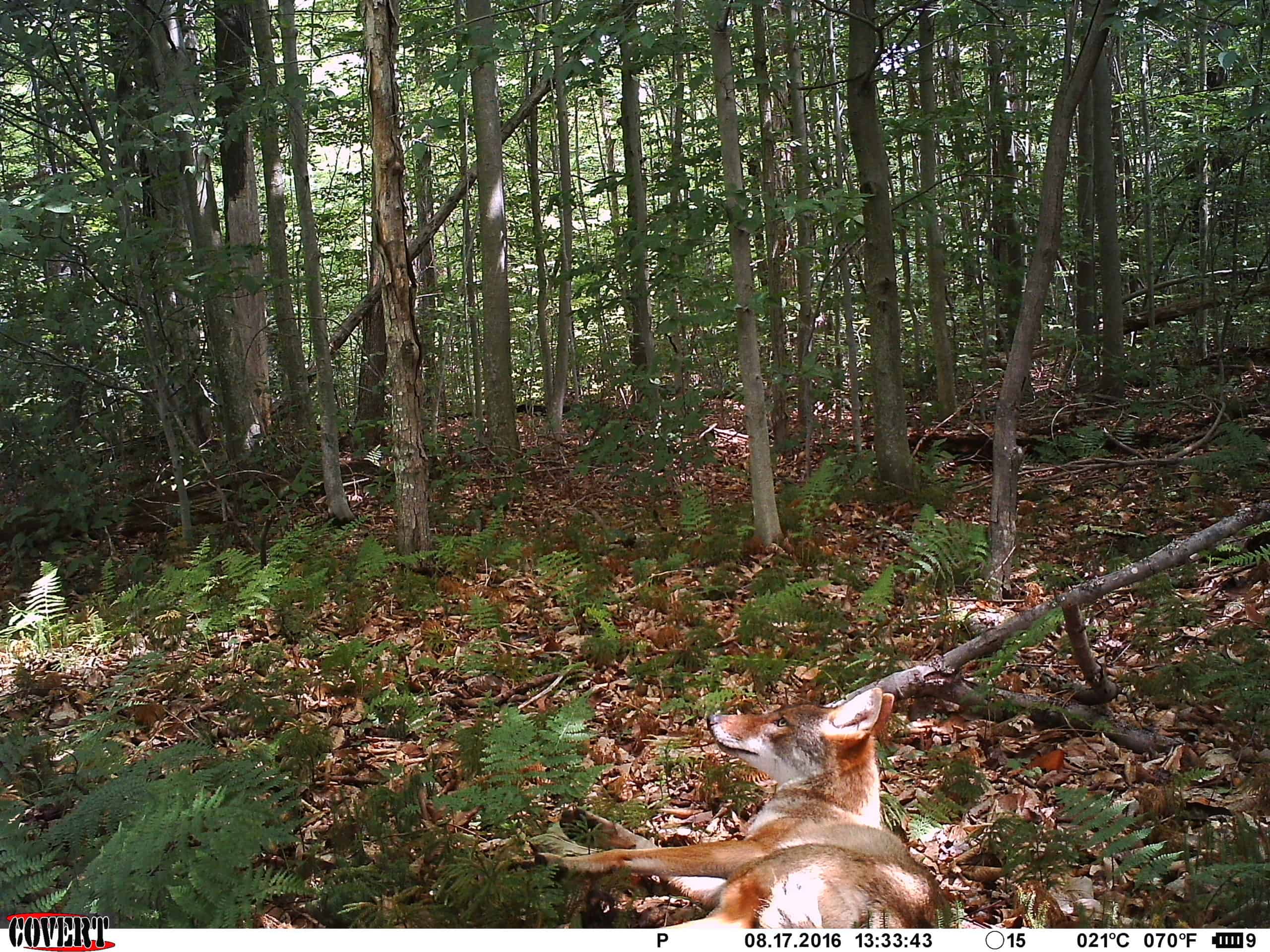
Credit: Asia Murphy
Fawns normally prefer to avoid coyotes, but a fear of humans may force them into otherwise suboptimal areas.
Enlarge
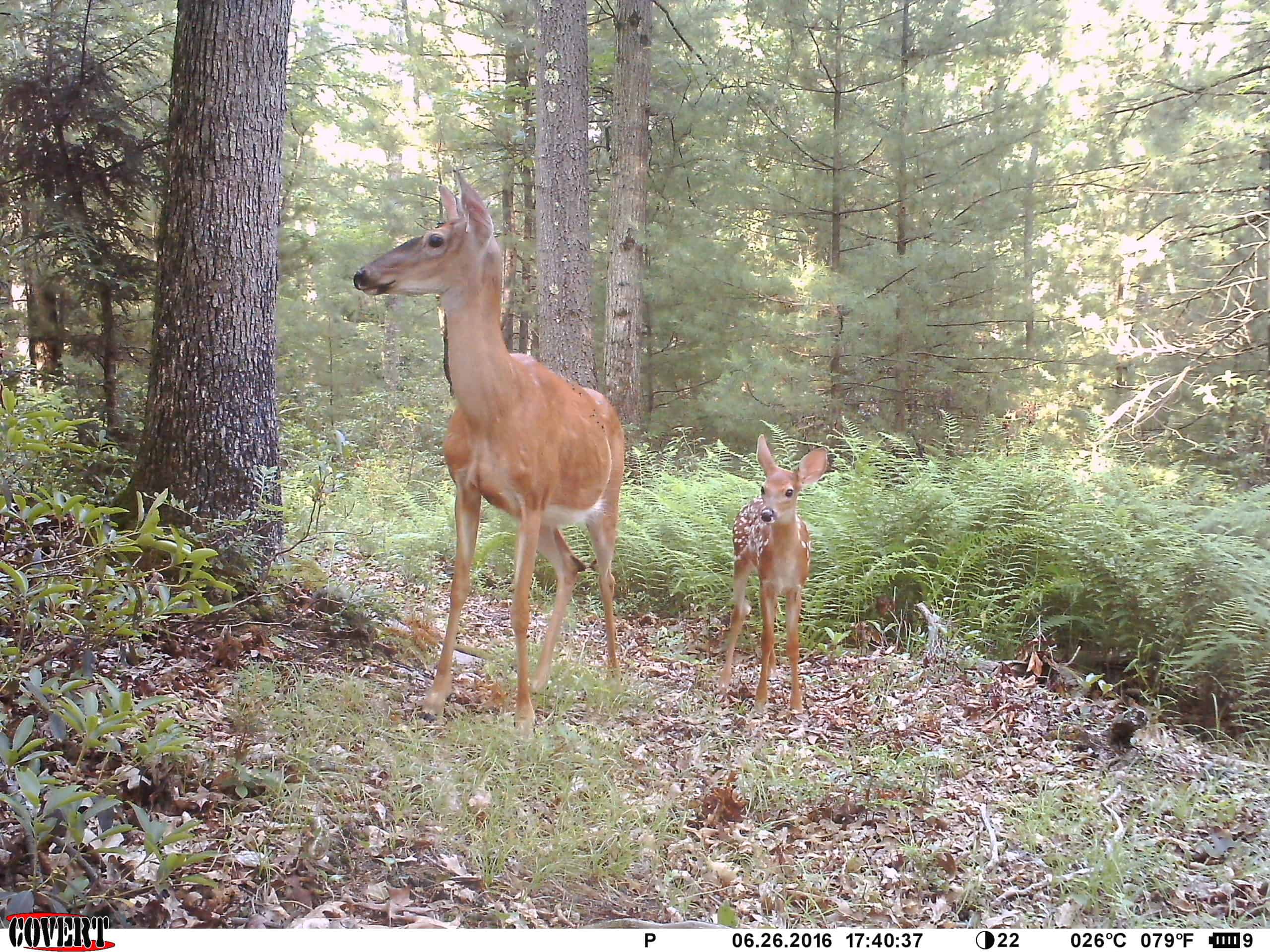
Credit: Asia Murphy
The researchers also noticed that deer seemed to be more vigilant in the areas with more humans compared to areas where they mostly just had to deal with non-human predators.
“If you can’t avoid being in the same place at the same time as something that’s trying to kill you, you’d expect them to be more vigilant,” Murphy said.
The take home message, she added, is that increasing human presence on the landscape shrinks the amount of time and space that deer and their predators have to move around in with relative ease. “We take a huge slice of the pie that’s available to animals,” she said.
Enlarge
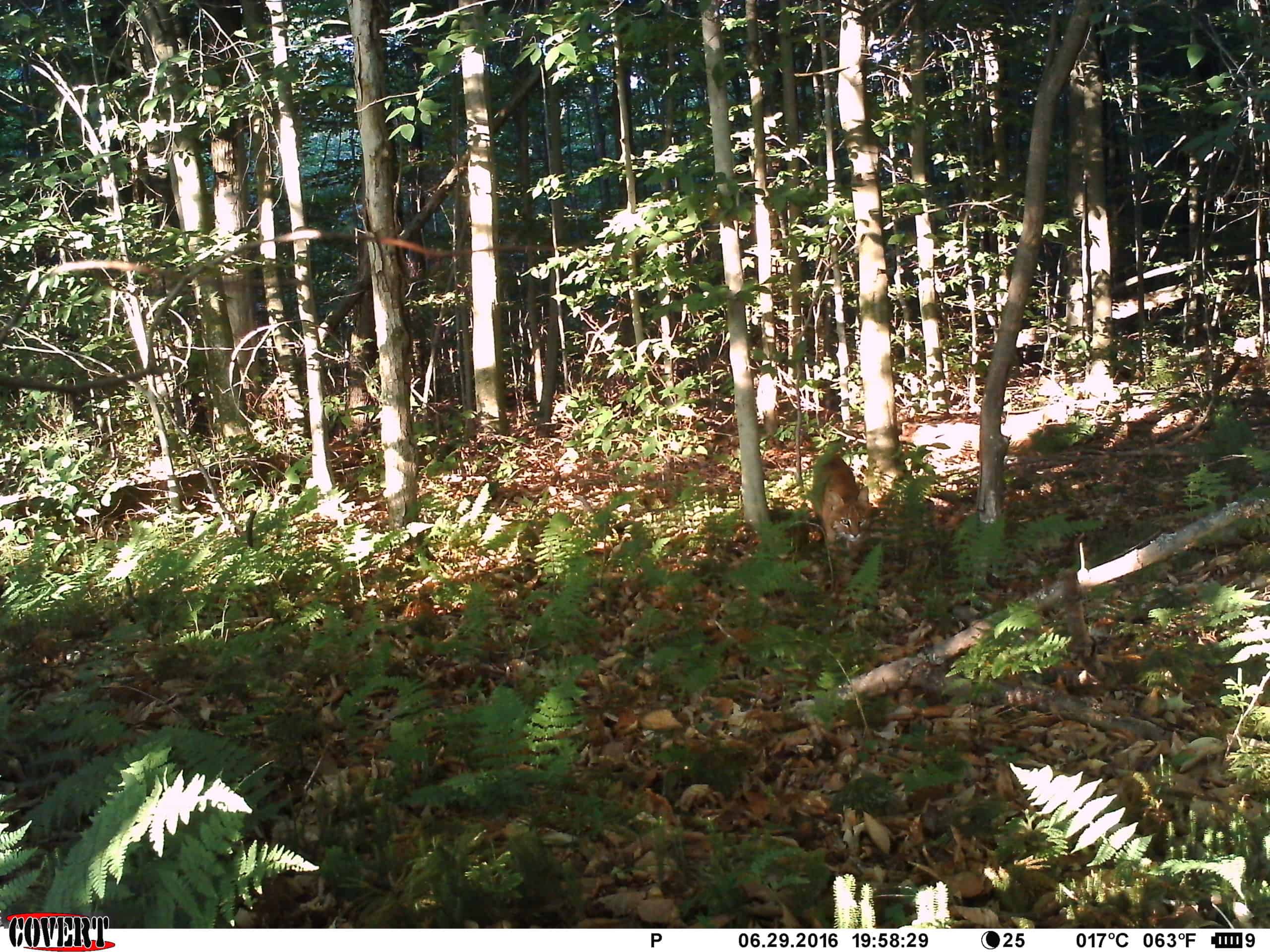
Credit: Asia Murphy
This photo essay is part of an occasional series from The Wildlife Society featuring photos and video images of wildlife taken with camera traps and other equipment. Check out other entries in the series here. If you’re working on an interesting camera trap research project or one that has a series of good photos you’d like to share, email Josh at jlearn@wildlife.org.
Header Image:
Research shows that white-tailed deer fawns change their activity patterns when humans are around.
Credit: Asia Murphy



